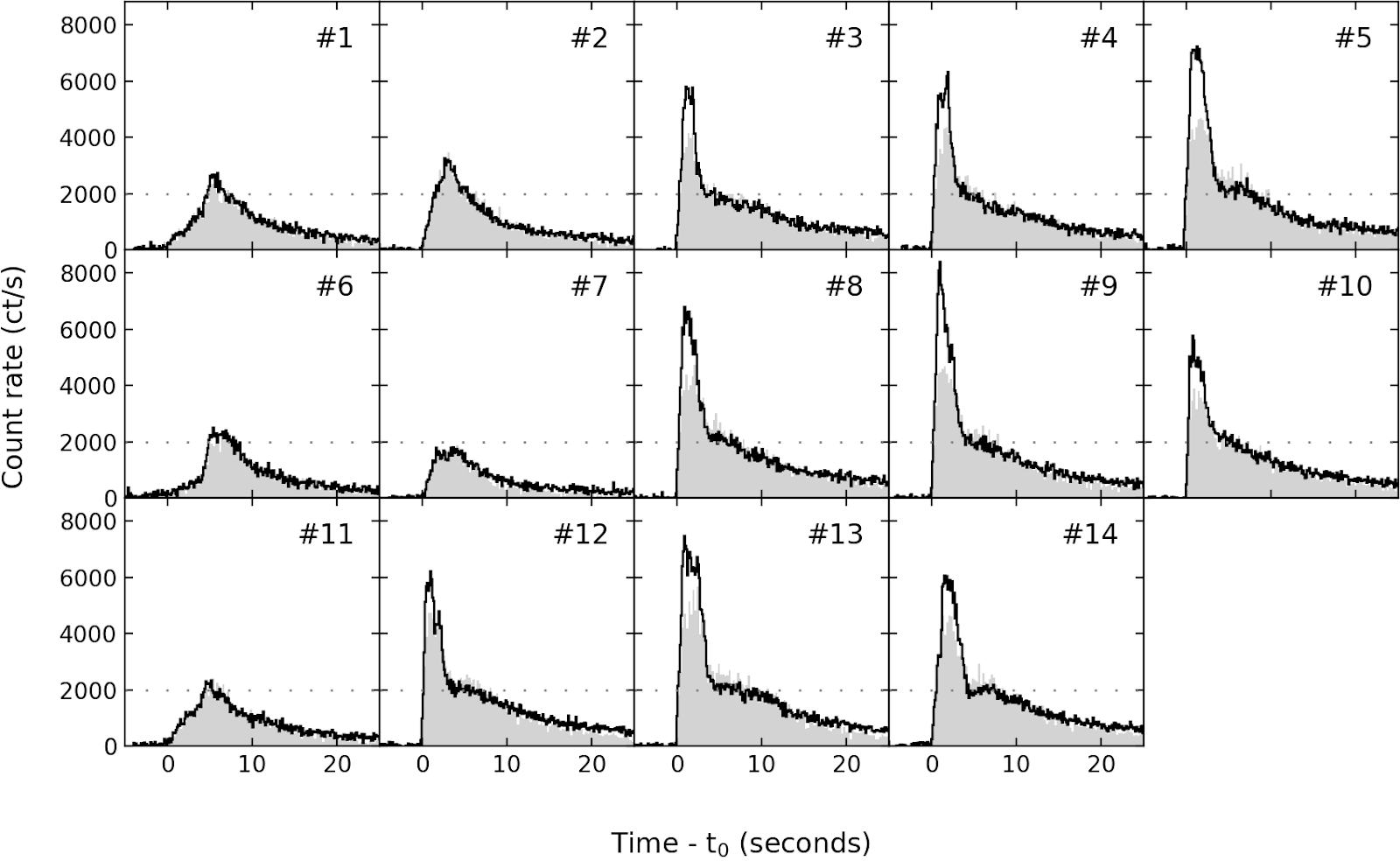NICER / ISS Science Nugget
for June 30, 2022
NICER monitors thermonuclear outbursts in a neutron star binary
NICER has been monitoring the current outburst of the neutron-star binary system 4U 1730-22 since mid-February. This is an unusually long outburst that is exhibiting a high rate of thermonuclear "Type 1" X-ray bursts, which occur as accreting matter builds up to a critical density and suddenly ignites. The 2022 outburst has produced 13 such bursts so far, and an additional one was detected during a much shorter outburst in 2021. NICER is finding that the shapes of these bursts (see figure) generally fall into two categories: weak and bright. The weak bursts are likely due to thermonuclear burning of freshly accreted hydrogen at the star's surface, while the bright ones are consistent with fusion of helium nuclei in deeper layers. NICER continues to monitor this system in hopes of measuring the recurrence time of bursts, and to detect bursts that encode additional information on the star's spin rate and other properties through so-called burst oscillations.

Figure:
Thumbnails of the 14 Type I X-ray bursts observed with NICER from the low-mass neutron star X-ray binary 4U 1730-22, including #1 from its prior brief outburst in 2021; the remainder have been collected since mid-February 2022. The black traces represent the broad band of 0.5 to 10 keV photons, while the gray shading shows the 4-10 keV sub-band (scaled up by a factor of 4). Time zero in each panel is the start of the burst.
<< Previous
Main Index
Next >>